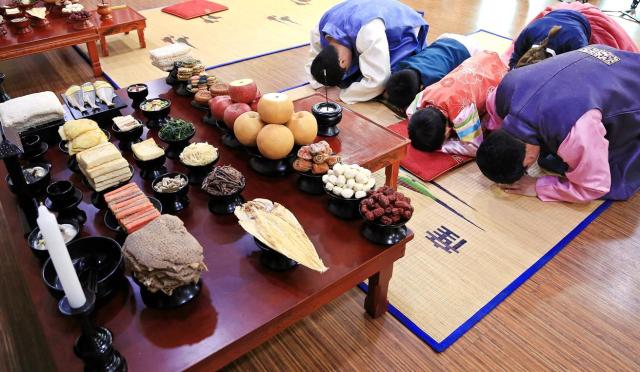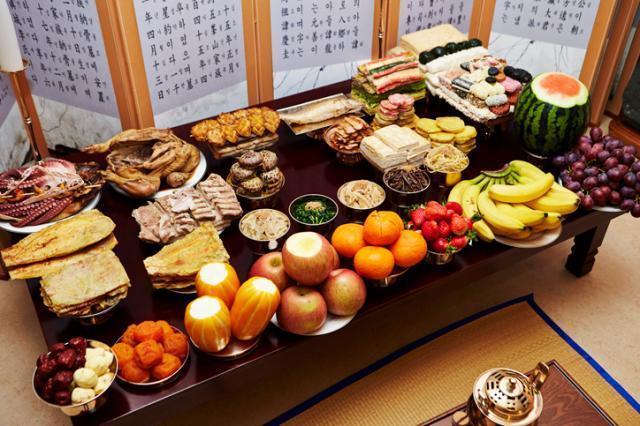
SEOUL -- Increased consumer prices have affected the preparation of "Charye" a Confucian rite that is carried out during the three-day traditional Korean Lunar New Year holiday. The ancestral ritual involves one or two large tables full of offerings including food, fruits, and beverages.
On Seollal, the Lunar New Year Day, and Chuseok, the traditional Korean autumn harvest thanksgiving holiday, non-Christian families traditionally arrange tables laden with dishes encompassing meat, fish, rice, vegetables, fruits, and confectioneries for the Charye rite. This Confucian practice, aimed at seeking prosperity and good health for the living family members from deceased ancestors, culminates with family gatherings around the Charye table to share offerings.
Many families approach the preparation of Charye with great seriousness. Days before Seollal or Chuseok, wives typically gather at the eldest family member's home to diligently prepare the various dishes for the rite. Usually, a dozen dishes grace the Charye table, with the eldest son leading the family in the offering ceremony.
However, the current wave of consumer price inflation is turning the preparation of Charye into a financial burden for many families during the Seollal holiday in early February 2023. According to data released by the pollster Korea Price Information (KPI), the cost for a four-member family to shop at traditional marketplaces for the Charye table would average 280,000 won ($209). This represents an 8.9 percent year-on-year increase due to inflation.
Products available at traditional marketplaces are more affordable than those in megastores and large-sized supermarkets. The Seoul-based pollster predicts that shopping at megastores would cost approximately 35 percent more.
KPI analysis points to the increased prices of vegetables and fruits as the primary contributors to the rise in Charye costs. For instance, three apples now cost about 150,000 won, marking a 43 percent increase compared to the Seollal holidays in January 2023. The average price of spring onions, a staple in Korean cuisine, has also surged by 60 percent year-on-year.
"Except for very few mass-produced products, prices of almost every product have increased," stated KPI manager Lee Dong-hoon in a release on January 24.
Copyright ⓒ Aju Press All rights reserved.




View more comments